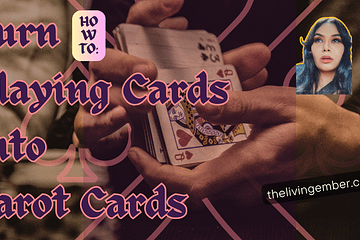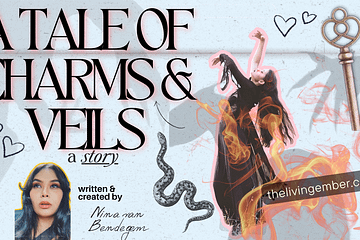Creating Immersive Narratives
Storytelling is a timeless art, a way to weave together words, images, and emotions to create a world that captures the imagination and resonates deeply with the audience. Whether you’re writing a novel, crafting a video, or creating content for your blog, the ability to tell a compelling story is a powerful tool. But what if you want to add an extra layer of magic, something that transports your audience into a world where the ordinary becomes extraordinary? In this guide, we’ll explore how to craft your own magical story, turning your creative visions into immersive narratives that leave a lasting impact.
The Power of Storytelling: Why We Tell Stories
Stories are deeply ingrained in human culture. They have been used for millennia to pass down knowledge, share experiences, and connect people across time and space. Contemporary research highlights that storytelling is more than just an art; it’s a cognitive tool that helps us understand complex concepts and relate to others on a deeper level1. When we tell stories, we are not just sharing information; we are creating a shared experience that can evoke emotions, inspire change, and even shape identity2.
The power of storytelling lies in its ability to engage both the mind and the heart. A well-crafted story can captivate an audience, drawing them into a narrative that feels both personal and universal. When you add a touch of magic to your storytelling, you’re inviting your audience to step into a world where anything is possible—a world where their imagination can run wild, and the ordinary rules of reality don’t apply.
Creating Immersive Narratives: The Key Elements
To create a truly immersive narrative, you need to consider several key elements that will bring your story to life. These elements work together to create a cohesive and engaging experience that draws your audience in and keeps them hooked from beginning to end.
- World-Building: One of the most important aspects of creating a magical story is building a world that feels real, even if it’s fantastical. World-building involves creating a setting that is rich in detail and full of possibilities. Whether your story takes place in a medieval fantasy realm, a futuristic city, or a hidden magical dimension within our own world, the setting should feel tangible and alive. Research has shown that well-developed world-building can significantly enhance the audience’s immersion and emotional investment in the story3.
- Writing Prompt: Describe a place in your magical world using all five senses. What does the air smell like? What do you hear in the background? How does the environment feel beneath your character’s feet? Paint a vivid picture that immerses your audience in this world.
- Character Development: At the heart of every great story are its characters. To create an immersive narrative, your characters need to be relatable, complex, and dynamic. They should have clear motivations, desires, and flaws that drive the plot forward. When crafting magical characters, consider how the magic of your world influences their lives. Do they possess special abilities? Are they affected by magical forces beyond their control? Characters who are deeply connected to the magical elements of your story can help anchor the audience in the narrative.
- Writing Prompt: Develop a character who has a unique magical ability that they struggle to control. How does this ability affect their daily life? How do they feel about it, and how does it shape their interactions with others?
- Plot Structure: A compelling plot is essential for keeping your audience engaged. The plot is the backbone of your story, guiding the characters through a series of events that lead to a satisfying conclusion. When crafting a magical story, your plot should incorporate elements of wonder, surprise, and discovery. This could involve quests for ancient artifacts, battles against dark forces, or journeys into uncharted territories.
- Writing Prompt: Outline a story arc where your protagonist goes on a journey to uncover a magical secret. What challenges do they face along the way? What do they discover about themselves by the end of their journey?
- Atmosphere and Mood: The atmosphere of your story is the overall feeling or mood that it evokes. This can be achieved through your choice of language, imagery, and pacing. In a magical narrative, atmosphere is crucial for creating a sense of wonder and enchantment. Consider how you want your audience to feel as they engage with your story. Should they feel awe-struck by the beauty of your world? Should they feel tension and suspense as the plot unfolds? Or perhaps a sense of nostalgia for a place that feels both familiar and otherworldly?
- Writing Prompt: Write a scene where your character enters a new, magical location. Focus on creating a mood through your descriptions. How does this place make your character feel? How do you want your audience to feel as they read this scene?
Infusing Magic into Your Story
Once you have the foundational elements in place, it’s time to infuse your story with magic. This doesn’t necessarily mean adding wizards and spells (though it certainly can); rather, it’s about creating a sense of the extraordinary within the ordinary. Here are a few ways to do that:
- Symbolism and Metaphor: Magic can often be found in the hidden meanings and symbols within your story. Consider using metaphors and symbols to represent larger themes or ideas. For example, a character’s journey through a dark forest could symbolize their inner struggle with fear or doubt. The moon might represent change and transformation, while a river could symbolize the passage of time.
- Writing Prompt: Choose a symbol (e.g., an object, an animal, or a natural element) that represents a key theme in your story. Write a scene where this symbol plays a significant role. How does it influence the characters or the plot?
- Mystery and Discovery: Keep your audience engaged by introducing elements of mystery and discovery. Reveal secrets gradually, allowing your audience to piece together the puzzle as the story unfolds. This can create a sense of intrigue and keep them invested in the outcome.
- Writing Prompt: Write a scene where your character discovers something unexpected—an ancient book, a hidden door, a mysterious letter. How do they react? What does this discovery mean for the rest of the story?
- Unexpected Twists: Magic often involves the unexpected—a twist of fate, a surprising revelation, or a moment of serendipity. Incorporating these elements into your story can heighten the sense of wonder and keep your audience on their toes.
- Writing Prompt: Think of a major plot twist that could change the direction of your story. Write a scene leading up to this twist, dropping subtle hints but keeping the surprise hidden until the last moment.
- Emotional Resonance: At its core, magic is about emotion—the feeling of being transported, of experiencing something beyond the ordinary. To create a magical story, focus on evoking strong emotions in your audience. Whether it’s awe, joy, fear, or sorrow, the emotions your story elicits are what will make it truly memorable.
- Writing Prompt: Write a scene that focuses on a powerful emotional moment for your character. How does the magic in your story amplify or reflect their emotions?
Story Template: Crafting Your Magical Narrative
Here’s a simple template you can use to structure your magical story:
- Introduction:
- Introduce your world: Begin by setting the scene. Describe the magical world your story takes place in. What makes it unique?
- Introduce your protagonist: Who is your main character? What are their goals, motivations, and challenges?
- Inciting Incident:
- Introduce a problem or quest: Something happens that sets the story in motion. This could be a magical event, a challenge, or a discovery that the protagonist must respond to.
- Rising Action:
- Build the tension: As your protagonist embarks on their journey, introduce obstacles and challenges. How do they deal with these? How does the magic of your world come into play
- Develop your characters: Show how your characters grow and change as they face these challenges.
- Climax:
- Reach the turning point: The story reaches its peak, often with a major revelation or a decisive battle. This is where the stakes are highest, and the protagonist must use everything they’ve learned to succeed.
- Falling Action:
- Resolve the conflict: After the climax, show the aftermath. How has the protagonist changed? How is the world different?
- Tie up loose ends: Address any remaining subplots or questions.
- Conclusion:
- End with a sense of closure or open possibilities: Your story can either end with a satisfying resolution or hint at future adventures. Either way, leave your audience with something to think about.

With these tips, prompts, and the template, you’re ready to craft your own magical narrative. Embrace the process, let your imagination run wild, and remember: the most powerful stories are those that resonate on a deep emotional level, leaving your audience enchanted and eager for more
Sources
- Gottschall, J. (2021). The Storytelling Animal: How Stories Make Us Human. Updated Edition. Houghton Mifflin Harcourt. ↩
- Bruner, J. (2022). The Narrative Construction of Reality in the Digital Age. Critical Inquiry, 48(2), 223-241. ↩
- Ryan, M. L., & Thon, J.-N. (2019). Immersion and Interactivity in Fiction and Narrative Media. Johns Hopkins University Press. ↩




0 Comments